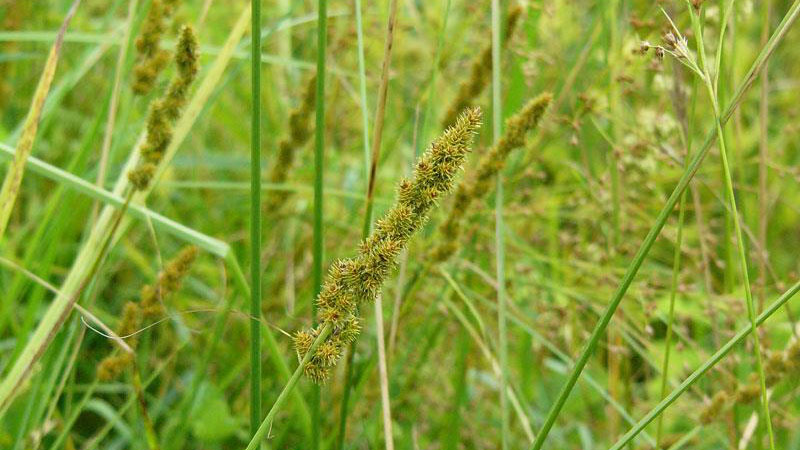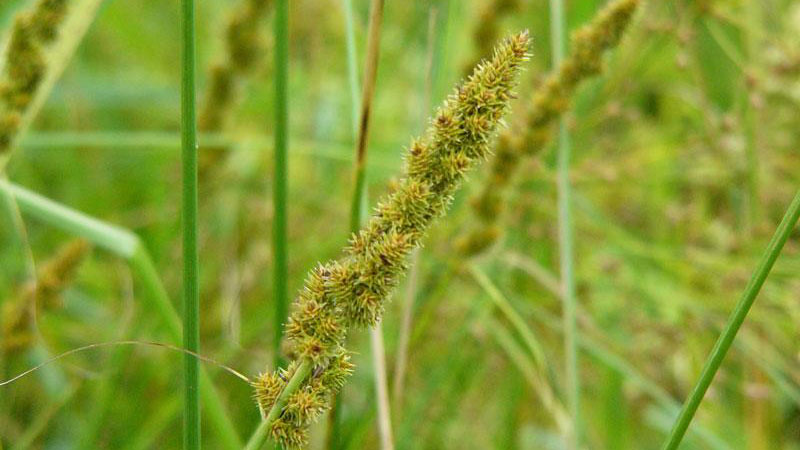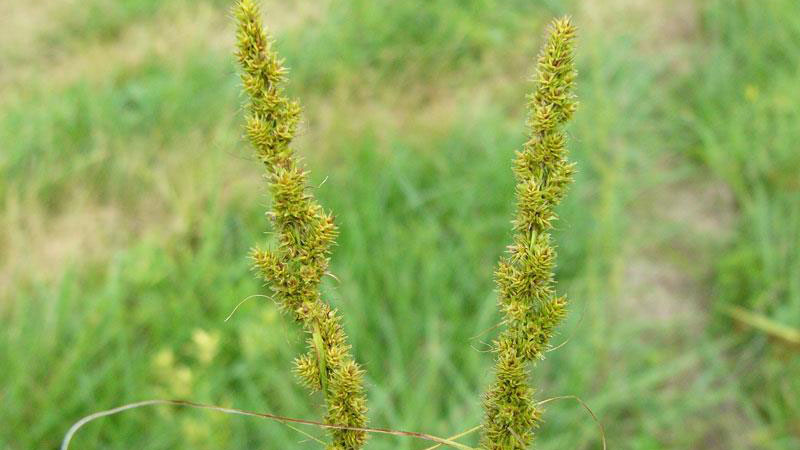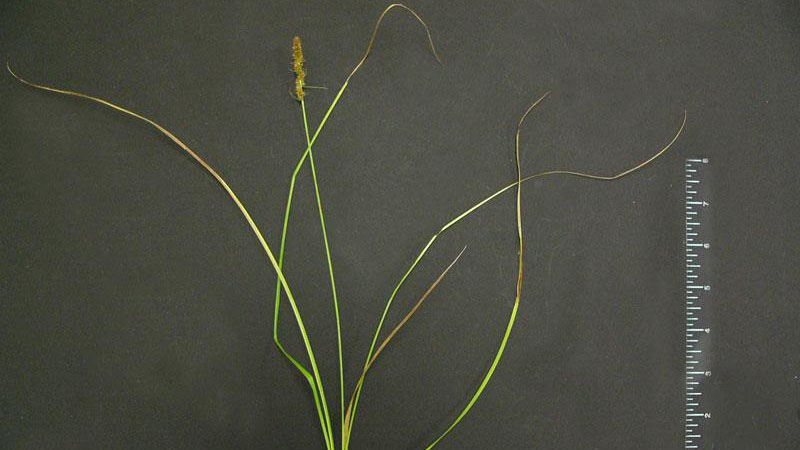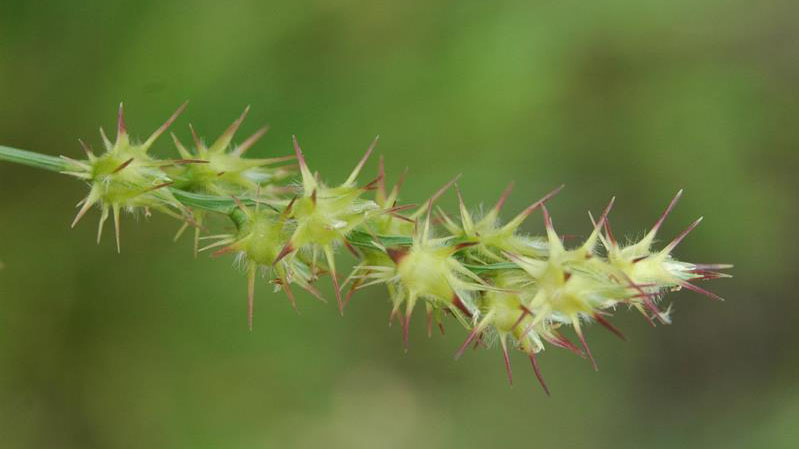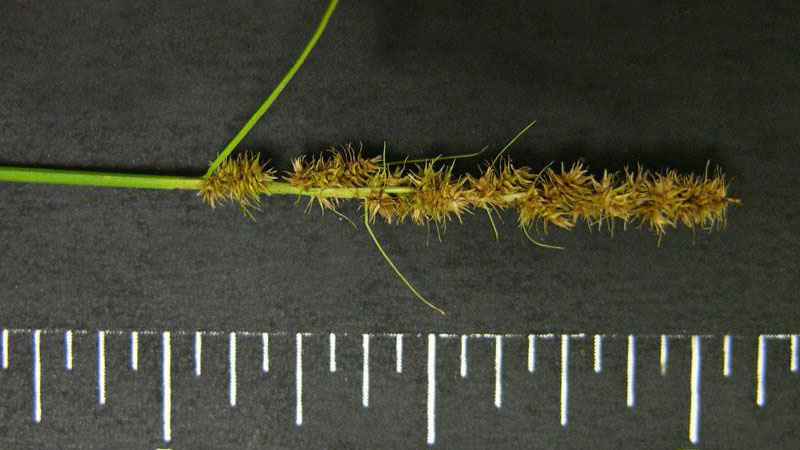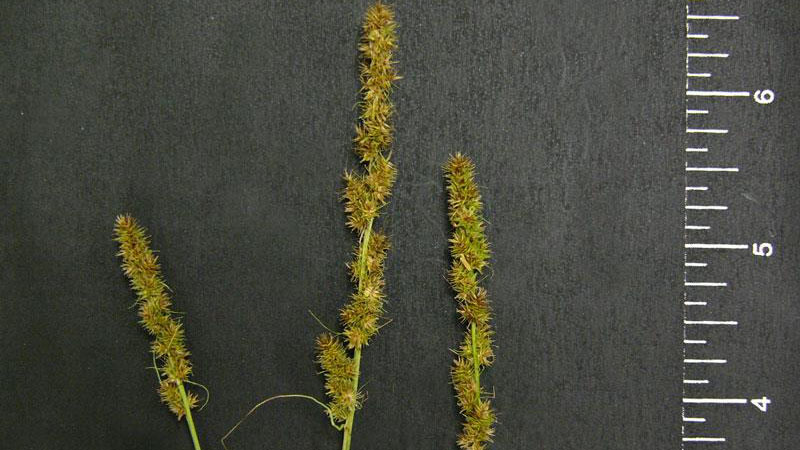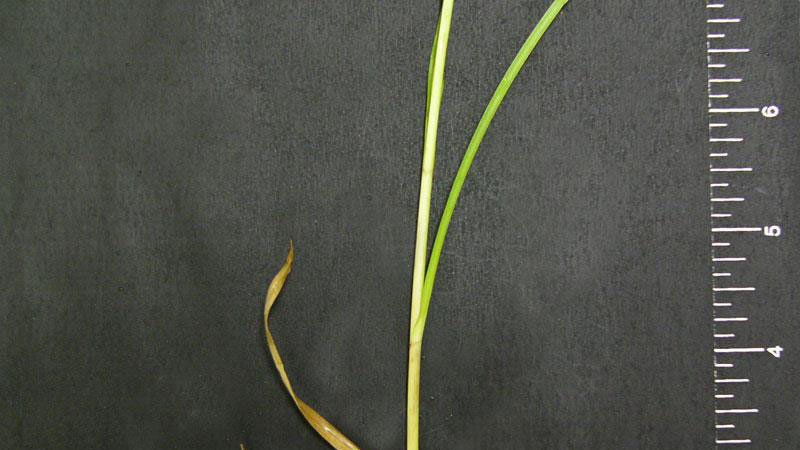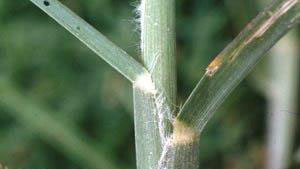Description
Sandbur (Cenchrus) can be a very troublesome weed in warm-season turf species. It is easily identified by the seedhead, which is a spike of tiny burs that can hurt when touched. This weed thrives in sandy soils, but can be controlled with certain herbicides when in the seedling stage.
Cultural Control
Maintaining a dense, vigorous turf is the first step in effective weed control. Cultural and management practices that enhance turfgrass growth generally reduce weed competition and encroachment. First, select adapted turfgrass cultivars for your area and then properly fertilize, mow, and water to encourage dense growth.
Species Data
- SEEDHEAD / FLOWER
- VERNATION TYPE
- leaves folded in the bud
- LIGULE TYPE
- fringe of hairs 0.04 inches (1 mm) long, with 0.08 inch (2 mm) long hairs on each side
- GROWTH SEASON / LIFE CYCLE
- summer annual or perennial weed
- AURICLE TYPE
- absent
- LEAF BLADE TIP SHAPE
- sharp-pointed; thin, flat, usually not hairy
Figure 10
- sharp-pointed; thin, flat, usually not hairy
- LEAF BLADE WIDTH
- 0.08 - 0.24 inches (2 - 6 mm) wide
- STOLON PRESENCE
- none, but stems decumbent
- RHIZOME PRESENCE
- present; very short
- COLLAR TYPE
- divided by midrib, distinct
- SHEATH TYPE
- flattened; sheath is usually not hairy
Figure 11
- flattened; sheath is usually not hairy
Publication date: Nov. 9, 2017
Recommendations for the use of agricultural chemicals are included in this publication as a convenience to the reader. The use of brand names and any mention or listing of commercial products or services in this publication does not imply endorsement by NC State University or N.C. A&T State University nor discrimination against similar products or services not mentioned. Individuals who use agricultural chemicals are responsible for ensuring that the intended use complies with current regulations and conforms to the product label. Be sure to obtain current information about usage regulations and examine a current product label before applying any chemical. For assistance, contact your local N.C. Cooperative Extension county center.
N.C. Cooperative Extension prohibits discrimination and harassment regardless of age, color, disability, family and marital status, gender identity, national origin, political beliefs, race, religion, sex (including pregnancy), sexual orientation and veteran status.

